Content marketing has arguably become the biggest buzzword in the marketing industry today.
It seems like you can’t have a conversation with a business owner who has an online presence without the term being brought up. Every online “expert” claims to hold the secret to content marketing.
But the reality is this. Like most marketing strategies, what works for one business won’t necessarily work for another. Content marketing campaigns will vary by industry as well.
So what exactly is content marketing?
By definition, it’s the process of creating and distributing digital materials online to directly or indirectly promote a brand, product, or service.
But that definition is so broad. To have a successful content marketing strategy as an ecommerce website, you need to take an ecommerce-specific approach.
Your content strategy won’t be the same as a B2B SaaS company or a B2C local retailer without an online presence.
We’ve seen countless ecommerce sites get so caught up in their marketing plan, that they actually lose sight of what drives their business. Rather than trying to copy the content strategy of a competitor (who may or may not have a good approach) you should be focusing on ecommerce conversions.
Everything you do needs to drive conversions. That’s the ultimate way to survive as an ecommerce shop.
So if you can’t directly or indirectly connect conversions to your content strategy, then it’s a wasted effort. That’s what inspired us to create this guide.
We want to clear up any misconceptions that you might have about content marketing and how it works. We’ve outlined a straightforward content marketing approach that’s specifically designed for ecommerce shops.
Ecommerce Content Marketing Process
Before you start blogging or uploading videos to YouTube, you need to establish a clear plan for your content strategy. Remember, everything you do ultimately needs to drive conversions.
This is something that we encounter all of the time when consulting with ecommerce companies.
They start to explain their plan, which sounds great in theory, but they don’t know the “why” behind the strategy.
For example, let’s say you’re putting all of your efforts into advertising on LinkedIn. You saw some information online about how many users are on the platform and how much it’s been growing over the years. Must be a good place to deploy a content marketing campaign, right?
For some businesses, sure. But that’s not the case for ecommerce.
You would know this if you took the time to create a plan before putting a strategy in motion. We’ve simplified the planning process into three easy steps. It’s crucial that you follow them in order.
Step #1: Identify Your Target Audience
This may sound simple, but you’d be surprised at how many people don’t know the answer to this question. Take a moment to see if you really know your target audience.
Here’s the thing. Your target audience needs to be crystal clear before every content marketing campaign. Otherwise, it won’t have a high success rate and lead to conversions.
Without knowing your target audience, you won’t know how to reach them.
- Age
- Gender
- Location
- Likes
- Dislikes
- Habits
These are just the basics that you need to know, at a minimum. Identifying the target market of your startup is something that you should have done a long time ago. But your overall audience isn’t always the same for individual campaigns and strategies.
For example, let’s say your company sells sports equipment online. Your audience isn’t just “people who play sports.”
You can’t tailor your content around that because it’s way too broad. High school softball players aren’t the same as middle-aged male golfers.
Step #2: Learn Their Online Habits
Remember, content marketing is all about distributing digital touchpoints online. That’s why it’s so important to figure out who your audience is.
You need to know where these people live online. Otherwise, you won’t know how or where to distribute the right content.
Social media is a great way to distribute your content.
For example, let’s say you’re looking at social media usage based on age. This will tell you more about your target audience, but it’s still not enough information.
You could probably eliminate the possibility of targeting users over the age of 55 on Instagram and Snapchat since they only make up 9% and 6% of the population on those platforms, respectively. However, other times broad stats can be misleading. 76% of Snapchat users fall between the ages of 12 and 34.
So if you’re targeting younger consumers, like Millennials or Generation Z, this might seem like the place to do it. But you need to learn their habits as well.
For simplicity sake, let’s continue using the example from before. You have an ecommerce sports shop, and you’re trying to sell equipment to high school softball players.
If you assume that Snapchat is the best place to distribute your content, you’re making a mistake. You haven’t done all of the research yet.
In fact, 49% of Generation Z females say that they prefer to use Snapchat for sending videos of themselves. 43% of that same group says they prefer using Snapchat for posting selfies. They don’t use this platform to interact with brands.
However, 48% of Generation Z females say that Instagram is their preferred social media network for following brands.
Even though Snapchat has a greater marketing penetration of your target audience, it doesn’t matter if they’re not using that platform to interact with businesses online.
You can’t make assumptions about habits. While your customers may be using the platform, that network is designed for B2B marketing, not B2C ecommerce shops.
Step #3: Create and Distribute Content
Once you figure out what platforms are the best places to distribute content for your previously identified target audience, now you can start to create content.
If you start building the content before you go through the first two steps, it’s a big mistake. You might be wasting your time creating content that people won’t end up seeing or using.
Let’s say you’re spending 90% of your content marketing resources on blogging. But your audience is consuming content on YouTube and Instagram. That’s not an efficient use of your resources.
The type of content you create will also depend on who you’re targeting people based on their stage in the marketing funnel.
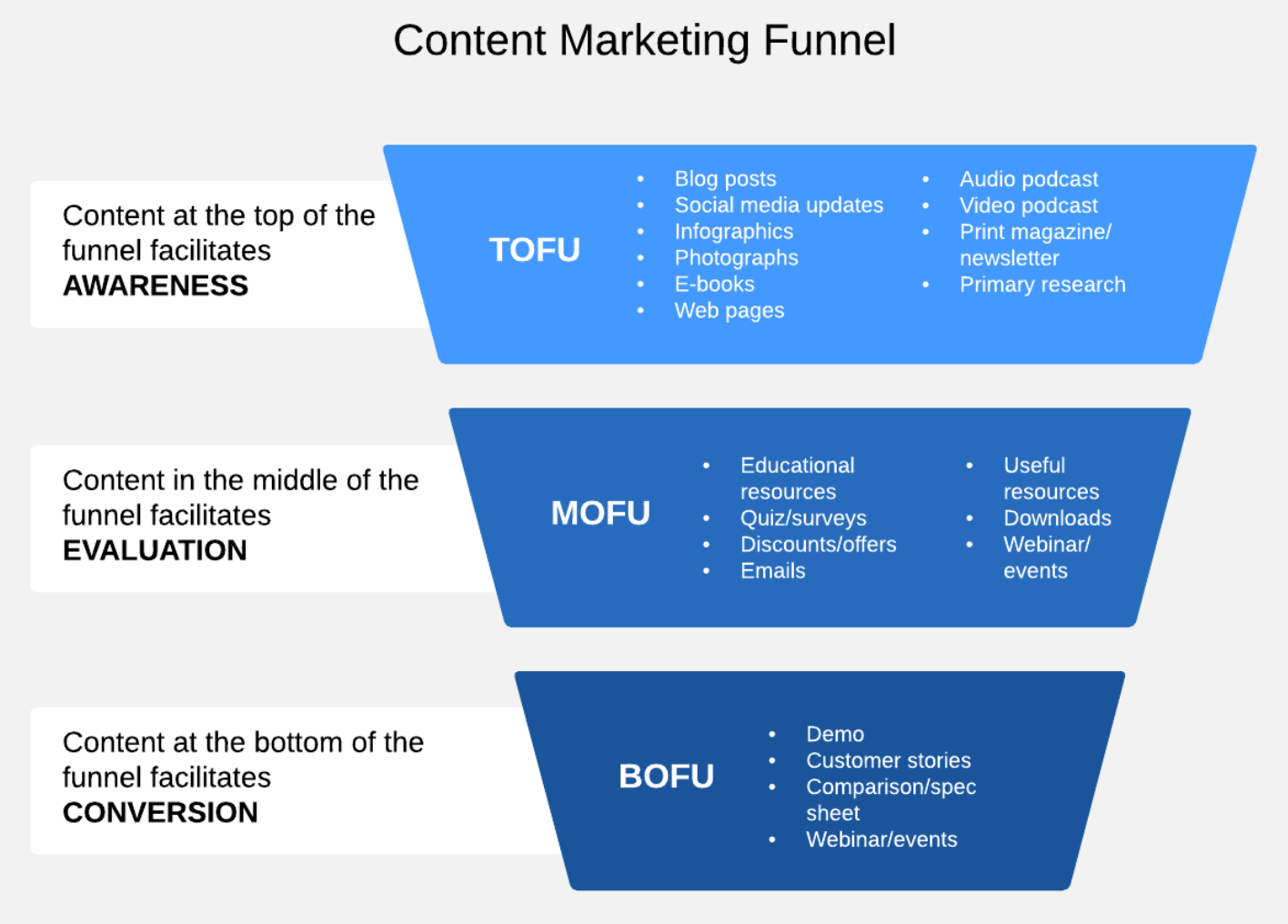
This graphic is a great resource to give you inspiration for content ideas.
A consumer who has never heard of your brand or ecommerce site will be targeted differently than repeat customer who knows what they’re looking for and is ready to make a purchase.
Breaking this entire process down into these three steps simplifies content marketing for ecommerce brands. But if you mix up the order of these steps, it won’t be as effective.
Types of Ecommerce Content Marketing
Now that you understand the approach behind content marketing for ecommerce sites, it’s time to look at some more specific types of content that you can use for your campaigns.
Keep in mind, not all of these will be applicable for every campaign you run. The content will always vary and be based on who you’re targeting and the platforms you’re planning to distribute on.
Blogging
We always recommend starting your content marketing strategy with blogging. While this may not be the most popular approach for ecommerce companies, it’s very beneficial in terms of SEO.
There are ways for you to scale your lead generation through blogging as well.
Let’s look at an example from REI—a top online seller for outdoor gear and apparel.
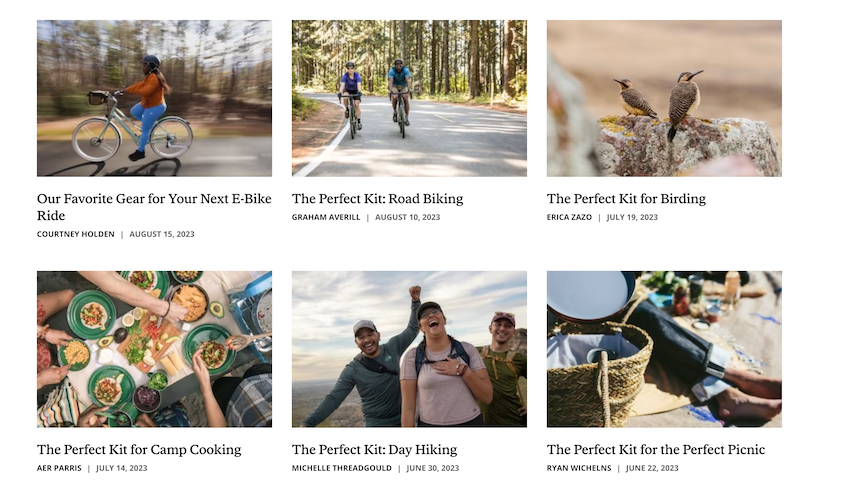
So if someone is browsing online and searching for more information about specific gear, recommendations, and travel tips, these posts can pop up. People can navigate to this website even if they never heard of REI.
As an ecommerce shop, you’re competing with dozens, hundreds, or even thousands of other brands across the web. You can’t rely on all of your customers going directly to your site to buy.
While this page serves as an informational resource on various activities, it’s also designed for conversions.
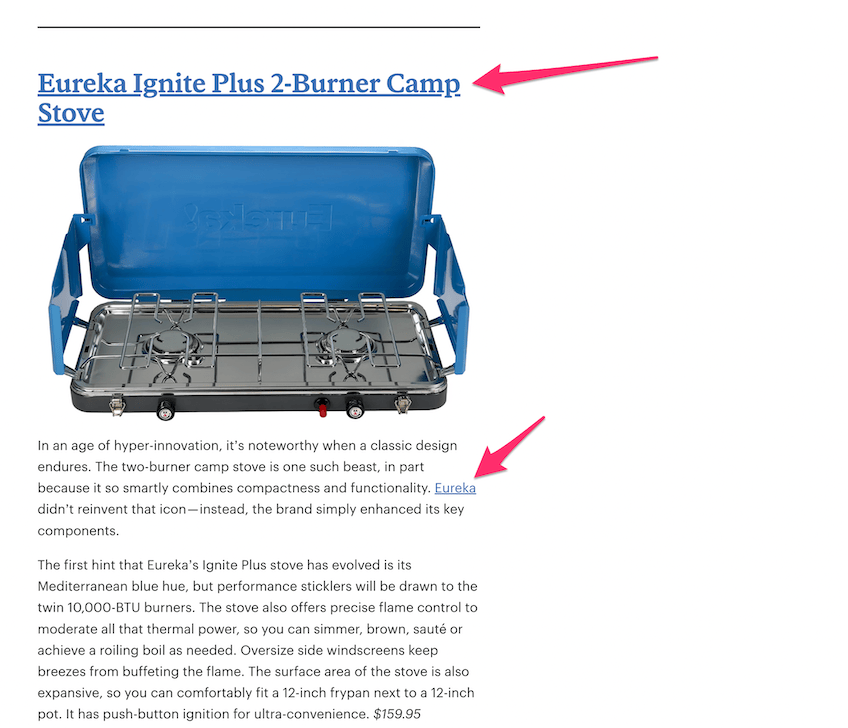
The blog is filled different product pitches throughout.
It’s a simple, yet effective approach, and you can definitely mimic this strategy for blog posts related to the products you’re selling online.
Original Photos
The biggest challenge of selling online is that customers can’t touch and feel what you’re offering before they buy it.
They rely heavily on visuals for this. So it’s up to you to ensure that you have tons of pictures of your products from nearly every imaginable angle. This is necessary for your product pages, but you can also repurpose those images on other channels as well.
For example, you can take an original photo of a model wearing the clothes that you’re selling and turn it into an Instagram shoppable post.
Again, this is only under the assumption that you’ve done the right research and recognized this platform as a place to reach your target audience.
Include photos in your blogs. Add them to your email campaigns. Share them on other social media channels. Keep taking original photos because you’ll always be able to find a use for them.
Video Content
This piggybacks off of our last point about how consumers need to see your products before they buy anything.
Images are somewhat limited, but videos can tell the full story. Just look at how big of an impact video content has on purchases.
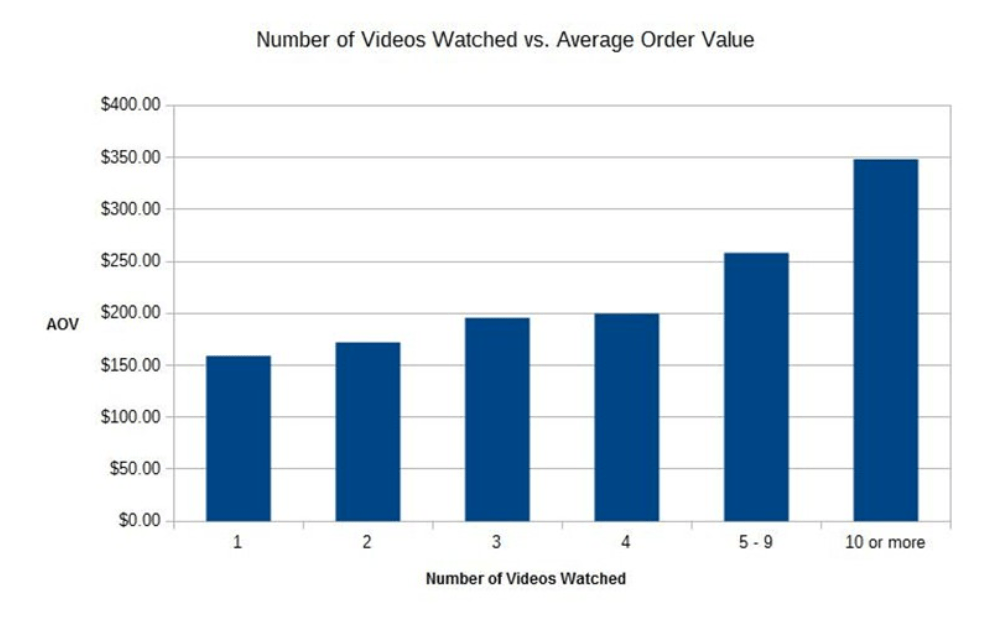
The more videos people watch about a product online, the higher their average order value is.
Videos can also be repurposed across multiple channels. Your blog, product pages, email campaigns, and social media profiles are all great places to distribute.
Furthermore, 90% of consumers say that videos assist their buying decisions. 54% of consumers want to see more video content from brands they support. Videos on landing pages can increase conversions by up to 80%.
Just adding the word “video” to an email subject line can increase your open rates by 19%.
- “How to” videos
- Product demonstrations
- Brand advertisements
- Interviews
- Animations
- Live video broadcasts
The list of possibilities goes on and on. Video content must be incorporated into marketing strategies for all ecommerce sites.
Product Buying Guides
Product buying guides are essential for the same reason as blogs. They can be used to drive organic traffic to your ecommerce site when people are looking for more information about specific products.
The biggest difference between product buying guides and blogging is that they will each target different types of people.
Blog posts are typically ToFu (top of funnel) content since the consumer is still in the product and brand awareness stage. On the other hand, product buying guides are MoFu (middle of funnel) content as the consumer reaches the evaluation stage of the purchase process.
Make sure that all of your buying guides have CTAs to drive conversions.
Email Marketing
Truthfully, email marketing isn’t just an ecommerce-specific content marketing strategy.
But with that said, there are definitely ways that your ecommerce shop can leverage emails that other businesses cannot. Here’s a look at how B2C marketers are using email marketing.
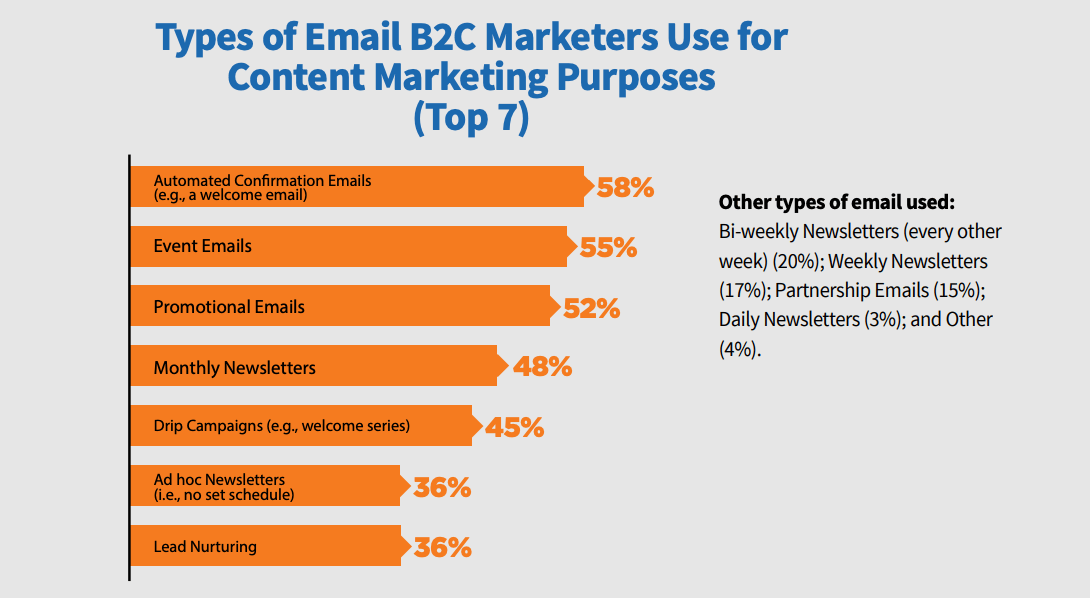
Your ecommerce site can take this to the next level.
Any time someone makes a purchase on your website, you have the opportunity to send them a drip campaign that’s relevant to that order.
- Order confirmation
- Shipping notification
- Package delivered
- Follow up
That’s four emails that you have an excuse to send. All of them are relevant to the customer and provide information that they want to see.
You can use these messages to drive more conversions. Provide discount codes off of an upcoming purchase. Show product recommendations based on what they bought.
If a customer buys a surfboard, send them an email about a wetsuit. If they buy workout shorts, send them an email about more new workout gear.
Customer Stories
There are lots of different formats you can use to tell a customer story.
- Reviews
- Testimonials
- Case studies
These can be in text format, image format, videos, or blog posts. Display them on your homepage. Create separate landing pages for customer stories. Share them on social media.
If you look back to the content marketing funnel that we talked about earlier, customer stories fall into the BoFu (bottom of funnel) category.
At this point, the consumer is close to converting. The customer stories can be the factor that drives them to complete the purchase process.
Interactive Content
Adding interactivity to your content strategy is a great way to bring a personalized touch to the customer.
Here’s an example from the Beardbrand website.
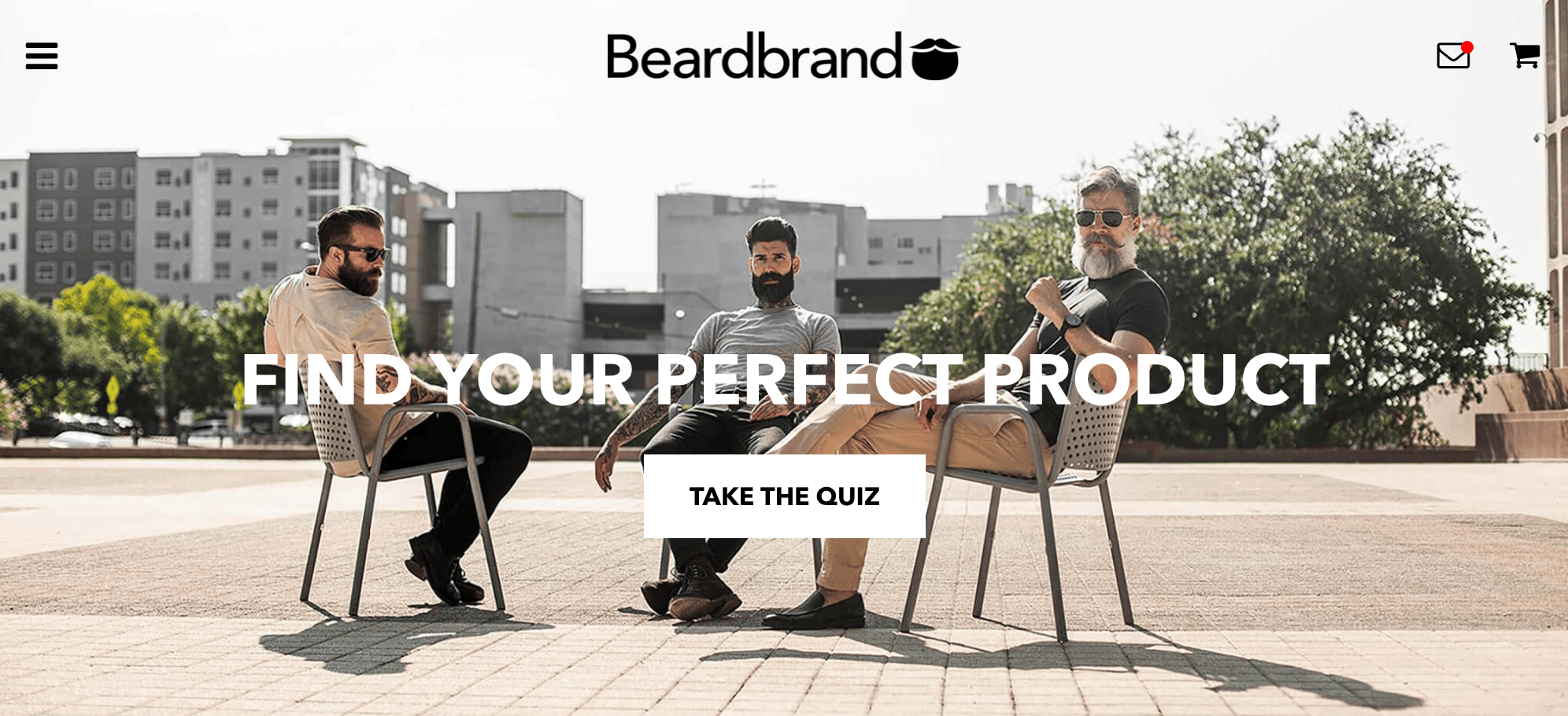
When you land on their homepage, you aren’t shown any specific products, and they don’t have any CTAs saying something like “buy now.”
Instead, there is an original photo of three men, each with three very different beards. There is a link to a quiz that will “help you find the perfect product.”
This interactive quiz makes the customer feel confident about the product that they’re purchasing. By answering a series of questions designed to meet their needs, it gives them an incentive to buy.
Conclusion
There are lots of misconceptions about content marketing and how it works. As an ecommerce business, you need to look for strategies that are specific to your industry.
Before you do anything, you need to know the process for ecommerce content marketing.
- Identify your audience
- Find out how to reach them online
- Create content and distribute them on those platforms
When you take this approach, everything else gets easier. Just remember that every content strategy you apply needs to ultimately drive conversions.
Keep this guide as a reference, and use the examples above as inspiration for some high-converting content strategies.
